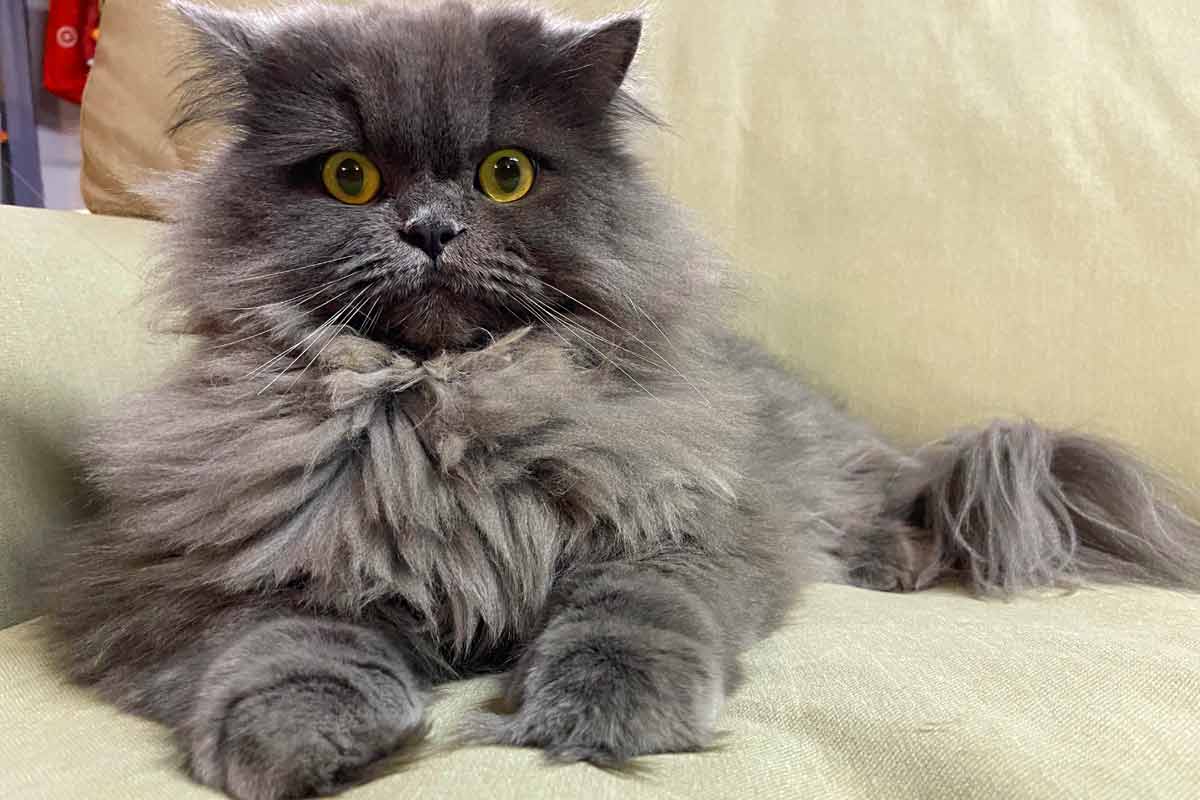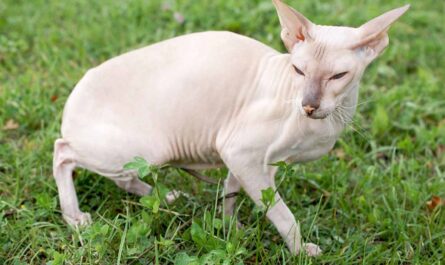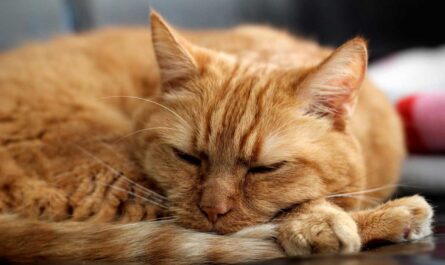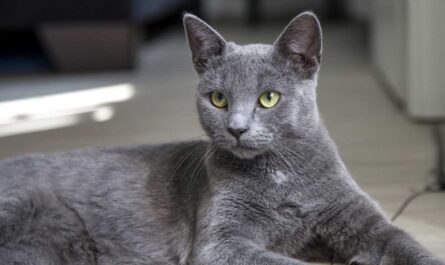What is a British Longhair cat breed, its profile, behavior, traits, lifespan, health, training, personality, diet, grooming, care, and other interesting facts? The British Longhair, akin to its Shorthair counterpart, exhibits a predilection for a grounded lifestyle. Unlike feline cohorts that revel in the embrace of human hands, these particular cats, distinguished by their luxurious long coats, recoil from the notion of being lifted or carried. It’s not a mere aversion; it’s a steadfast insistence on having their proverbial feet planted firmly on the ground, a testament to their independent spirit and perhaps a subtle disdain for the lifting whims of their human companions. This article will share insight into the profile, behavior, traits, lifespan, health, training, personality, grooming, care, diet, and other interesting facts about the British Longhair Catcat breed. Keep reading.
British Longhair History
The narrative tapestry of the British Longhair unfurls against the backdrop of feline history, tracing its roots back to the British Shorthair. A relatively new entrant into the feline kingdom, this breed emerged as a result of strategic outcrossing during critical periods in the 20th century. The aftermath of both World Wars saw a significant decline in the British Shorthair population, compelling breeders to diversify their gene pool through crossbreeding with Persians, Burmese, Chartreux, and Russian Blue cats.
The emergence of long-haired kittens from these unions, while ineligible for the British Shorthair registry, exhibited traits that endeared them to cat enthusiasts, establishing them as exceptional companions. Despite their presence since the first half of the 20th century, the formal recognition of the British Longhair only materialized in 2009 by TICA, marking a belated acknowledgment of the breed’s distinctive qualities. Intriguingly, the Cat Fanciers Association remains reticent in recognizing the British Longhair, underscoring the breed’s journey as a testament to perseverance and the enduring allure of these captivating feline companions.
The Personality of British Longhair Cats
In the enchanting tapestry of feline personalities, the British Longhair emerges as a masterpiece, blending exquisite good looks with a charming and adaptable demeanor. With a coat that can be likened to a canvas displaying more than 300 different colors and patterns, these felines are visual poetry, captivating hearts with their aesthetic diversity. The personality of the British Longhair unfolds as a story of quiet elegance, adaptability, and friendliness. Their love for family is evident, yet they possess an independent streak, making them an ideal choice for cat lovers with a penchant for solitude.
The British Longhair’s love language is nuanced; they appreciate affection but on their terms. Unlike lap-centric breeds, these cats prefer to dictate the cadence of their interactions, opting for sitting next to their humans rather than snugly laps. It’s a testament to their autonomy and discerning nature. They navigate the delicate balance between sociability and solitude with finesse, making them a perfect match for those who desire the companionship of a feline without the demand for constant togetherness.
Friendship with a British Longhair extends beyond the human realm; these cats are amiable with nearly everyone, provided boundaries are respected. Their sociable nature, however, comes with a caveat—they decide when and how affection is bestowed. The art of respecting their personal space becomes paramount, as they eschew tightly held embraces. This breed’s ability to harmonize with a variety of personalities, feline or otherwise, underscores its versatility in enriching multi-species households. In the symphony of feline companionship, the British Longhair adds a note of sophistication, weaving together a tale of elegance, adaptability, and genuine connection.
British Longhair Temperament
The British Longhair, with its flowing coat and regal demeanor, boasts a temperament that mirrors its majestic appearance. Calmness is the cornerstone of their character, manifesting as a tranquil and unflappable demeanor that weaves an air of serenity into the fabric of daily life. This feline aristocrat navigates the world with an unruffled grace, exuding an almost Zen-like composure even in the face of tumultuous surroundings.
Yet, beneath the composed exterior lies a heart brimming with affection. The British Longhair is not merely a symbol of stoicism but also a paragon of warmth. Their affectionate nature extends beyond the confines of mere physical proximity, radiating through every purr and gentle nuzzle. These cats become steadfast companions, forming deep emotional connections with their human counterparts and infusing the home with an enduring sense of companionship.
People-oriented and cheerful, the British Longhair thrives on social bonds. Their inclination toward human interaction goes beyond the perfunctory; it is an integral part of their joyful disposition. Their cheerful demeanor is infectious, turning the household into a haven of positivity. Whether engaged in a spirited play session or simply basking in the shared warmth of a sunlit room, the British Longhair’s temperament is a harmonious blend of calm sophistication and exuberant affection.
Other Names
Known by the alternative moniker of British Semi-Longhair, this breed’s nomenclature unveils a nuanced aspect of its identity. The term “Semi-Longhair” encapsulates the exquisite compromise between the sleek elegance of the Shorthair variant and the luxurious allure of a long coat. It hints at a duality— a cat that embodies both the practicality of shorter fur and the opulence of longer strands. This alternative name not only broadens our linguistic palette but also deepens our understanding of the breed’s versatile nature.
British Longhair Affection Level
The British Longhair cat breed, an elegant cousin to the renowned British Shorthair, brings its distinctive flair to the table when it comes to the realm of affection. Displaying a regal demeanor, this breed strikes a balance between an innate desire for connection and a dignified sense of independence. While not as overtly affectionate as some of their more demonstrative counterparts, British Longhairs convey their affection through refined gestures and subtle cues. Picture a cat that appreciates the art of a gentle touch and values the proximity of their human companion without indulging in overly effusive displays. This nuanced approach to affection makes the British Longhair a delightful choice for those who appreciate a cat that adds a touch of sophistication to the tender dance of companionship.
Conversely, for those seeking a feline friend who revels in unabashed displays of affection, breeds with a higher affection level may be better suited. The Siamese or the Ragdoll, for instance, embodies a more overt form of emotional reciprocity, generously showering their human counterparts with effervescent displays of love and companionship.
Activity Level of British Longhair Cats
In the grand tapestry of feline energy, the British Longhair contributes a measured and graceful thread. Characterized by a moderate activity level, these cats engage in play with an air of aristocratic poise. Picture a languid swat at a dangling toy or a leisurely exploration of the living space, showcasing the British Longhair’s penchant for dignified amusement. Their moderate activity level strikes a harmonious chord, making them well-suited for households that appreciate a blend of playfulness and regal repose.
In contrast, high-activity breeds, such as the Bengal or Abyssinian, infuse spaces with a kinetic energy that demands frequent and spirited engagement. These breeds thrive in environments where play is not just a pastime but a cornerstone of their daily routine, necessitating owners with an active lifestyle and a penchant for interactive play.
British Longhair Kid-Friendly
In the realm of feline companionship, the Kid-Friendly attribute of a cat breed unfurls the nuanced tapestry of its interaction with the younger members of the household. Breeds with a higher rating in this domain emerge as the gentle and patient guardians of childhood joy. These feline friends not only tolerate the exuberance of youthful play but actively engage in it, transforming living spaces into arenas of shared laughter and boundless energy. The British Longhair, with its luxurious coat and amiable disposition, exemplifies a breed well-suited for the company of children, fostering an environment where mutual respect and delightful camaraderie blossom. On the contrary, breeds with a lower kid-friendly rating may find the unpredictable movements and sounds of children disconcerting, prompting a more reserved or cautious demeanor.
Cost of British Longhair Cats
The financial investment required to bring a British Longhair cat into your home spans a spectrum as broad as the diverse personalities these feline companions often possess. While on the more affordable end, you might find these exquisite cats available for a modest $300, the upper echelons of feline extravagance could see you parting with a substantial $5,000. The considerable range in pricing is influenced by factors such as lineage, pedigree, and the reputation of the breeder. Those seeking a regal feline companion might find that the allure of the British Longhair comes not only from its captivating appearance but also from the investment it demands.
Size and Stature of British Longhair Cats
Beneath the luxurious coat of the British Longhair lies a creature of moderate proportions, exuding an air of grace and elegance. A fully grown member of this feline aristocracy could tip the scales anywhere between 8 to 18 pounds or even more, displaying a range of sizes that mirrors the diversity within the breed. Standing proudly, these felines might reach heights between 11 to 14 inches, their stature emphasizing both their poise and the majesty ingrained in their genetics. The medium size of British Longhair cats, coupled with their regal appearance, makes them a captivating presence in any feline-loving household.
The lifespan of British Longhair Cats
Embarking on a journey with a British Longhair cat involves not just a monetary commitment but a temporal one as well. These regal companions, if cared for with devotion and diligence, may grace your home with their presence for a span of 12 to 16 years. Their longevity, akin to their dignified demeanor, allows for a significant and lasting companionship. Prospective cat owners considering the addition of a British Longhair to their family must recognize the responsibility that comes with providing care and affection for a feline companion over an extended period, a commitment that transcends the fleeting nature of shorter-lived pets.
Shedding Habits of British Longhair Cats
As the velvety curtain of the British Longhair’s fur drapes their form, the question of shedding naturally arises. Long-haired by nature, these felines indeed indulge in a certain measure of shedding, adding an element of grooming to their caretaker’s routine. However, it is crucial to note that the shedding tendencies of the British Longhair are not as prolific as some of their shorter-haired counterparts. The trade-off for the luxurious, flowing coat lies in a more manageable shedding frequency, providing a balance that cat owners might find conducive to maintaining a pristine living environment. The allure of the British Longhair extends beyond aesthetics, encompassing a practicality that distinguishes this breed in the feline kingdom.
The Sociability of British Longhair Cats
The Sociability attribute offers a window into the social inclinations of a cat breed, illuminating the degree to which it seeks out and revels in human interaction. Breeds with a higher sociability rating are the consummate companions, not content with mere moments of connection but actively yearning to spend the entirety of their day in the company of their human counterparts. Imagine a cat that shadows your every step, perches on your shoulder like a fluffy confidante, and participates in daily activities with unwavering enthusiasm. The British Longhair, with its affable nature and penchant for forming strong bonds, exemplifies a highly sociable breed, transforming the home into a stage for the ongoing drama of shared experiences.
Conversely, breeds with a lower sociability rating exhibit a more independent streak. While not averse to affection, these felines may choose moments of solitude and personal space over constant companionship. The Norwegian Forest Cat or the Scottish Fold, with their introspective disposition, epitomize breeds that, while appreciative of human interaction, do not actively seek it out, fostering a more balanced and measured approach to social dynamics.
British Longhair Playfulness
The Playfulness trait within the context of cat breeds serves as a captivating portal into the dynamic world of feline antics and frolics. For breeds like the British Longhair, a high score in playfulness is akin to unlocking a treasure trove of vivacious energy and innate hunting prowess. These cats, with their long, luxurious fur and playful spirit, transform ordinary play sessions into captivating adventures. Picture a British Longhair, tail aloft and eyes alight with curiosity, pouncing on feathered toys or engaging in a spirited game of hide-and-seek. Their strong hunting instincts infuse an element of thrill into playtime, making them not just companions but also skilled playmates that elevate the art of play to a whole new level.
In contrast, breeds with a lower playfulness score may approach playtime with a more measured demeanor. While still capable of enjoying interactive sessions, their energy may be dispersed in less acrobatic ways. The Scottish Fold or the Persian, for example, may indulge in leisurely play, savoring the quieter joys of batting at a dangling toy or observing the world from the perch of a comfortable window sill. The distinction in playfulness underscores the importance of aligning the cat’s energy levels with the owner’s preferences, ensuring a harmonious and enjoyable playtime experience.
Independence
Independence, as a defining characteristic of cat breeds, unravels the tapestry of feline self-sufficiency, offering insights into their ability to navigate solitary hours without succumbing to boredom or restlessness. A breed like the British Longhair, with a commendable score in independence, epitomizes the art of solitude. These majestic cats, adorned with their luxurious long coats, possess the fortitude to spend extended hours in serene isolation, weaving through the threads of their contemplative moments. Their independence allows them to be not just companions but also roommates who understand the ebb and flow of personal space, making them well-suited for individuals with busy lifestyles or those who appreciate a balance between shared moments and solitary reflections.
Conversely, breeds with a lower independence score thrive on constant companionship and interaction. These sociable felines, such as the Bengal or the Sphynx, may find solace in the presence of their human counterparts, seeking engagement and stimulation to stave off potential feelings of isolation. The symbiotic relationship between cats and owner becomes a cornerstone of their well-being, emphasizing the need for attentive interaction and companionship for breeds that flourish in the company of their human allies.
British Longhair Vocality
The Vocality trait unveils the symphony of sounds that resonates within the feline realm, providing a glimpse into the communication style of different cat breeds. A higher vocality rating in a breed like the British Longhair signifies a predisposition towards expressive meows and a vibrant repertoire of vocalizations. These melodious cats, with their long, flowing fur and communicative prowess, transform mundane moments into captivating exchanges. The British Longhair may serenade its owner with a melodic meow or engage in conversational banter, weaving an audible tapestry that adds an enchanting layer to the feline-human dialogue.
On the other end of the spectrum, breeds with a lower vocality rating are the silent maestros of the cat world. The Ragdoll or the Chartreux, for instance, may choose to express themselves through subtle gestures or the eloquent language of body movements rather than a cacophony of meows. Their quieter demeanor contributes to a more serene living environment, making them an ideal choice for those who appreciate the beauty of non-verbal communication and the subtleties of feline expression. The diversity in vocality ratings showcases the varied ways in which cats articulate their emotions, enriching the tapestry of the human-feline connection.
British Longhair Intelligence
The Intelligence attribute delves into the cognitive prowess of a cat breed, unraveling the mysteries of its curiosity, investigative nature, and trainability. Breeds with higher intelligence ratings are the Einsteins of the feline world—curious, quick-witted, and remarkably receptive to training. These feline prodigies not only navigate their environments with a keen sense of awareness but also eagerly partake in mental exercises, making them ideal candidates for interactive play and even learning tricks. The British Longhair, with its inquisitive gaze and agile mind, exemplifies a breed that thrives on mental stimulation, turning each day into a canvas for intellectual exploration.
Conversely, breeds with lower intelligence ratings may not be as inclined toward complex problem-solving or obedience training. However, their laid-back and easygoing nature compensates for their less trainable disposition. Picture a cat that, while not necessarily performing acrobatic feats on command, exudes a tranquil charm, creating an atmosphere of relaxation and comfort. The Persian or the Ragamuffin, with their serene demeanor, epitomize breeds that prioritize a more relaxed approach to life over intellectual pursuits.
Serenity Embodied
Beyond their capacious fur and charming aesthetics, British Longhair cats epitomize serenity. They exude an unparalleled calmness that sets them apart in the feline realm. Even in moments of playfulness, they eschew the frenetic energy and acrobatic fervor commonly associated with their counterparts. Their playtime is marked by a measured grace, a deliberate engagement that reflects a more composed demeanor. It’s as if they navigate the world with serene elegance, unaffected by the whims of a chaotic environment.
A Deliberate Elegance
While other cat breeds may be inclined towards aerial displays and gravity-defying leaps, the British Longhair embraces a deliberate elegance. High jumps and acrobatic escapades find little favor in their repertoire. Instead, they weave through the tapestry of daily life with regal composure, each movement a calculated step that mirrors the unruffled poise inherent in their nature. Their subdued approach to physical activity adds a layer of sophistication to their overall presence, making them stand out in a realm often dominated by agility.
The Allure of Blue
In the spectrum of feline aesthetics, the British Longhair shares a commonality with its Shorthair counterpart—the allure of the color blue. Among these cats, the shade blue reigns supreme, capturing the collective aesthetic preference of admirers and breed enthusiasts alike. Whether it’s the regal navy hue or the softer, ethereal tones, the blue coat of the British Longhair becomes a canvas, accentuating the already majestic presence of these cats. It’s a shared trait that ties them to their Shorthair kin, a chromatic preference that adds a touch of royalty to their already distinguished demeanor.
British Longhair Cat Breed Standard
Eyes:
In the meticulous pursuit of feline perfection, the British Longhair cat breed adheres to a stringent standard when it comes to its mesmerizing gaze. The eyes, with a distinctly rounded shape, harmoniously accentuate the overall circular contours of the face, contributing to the breed’s signature look of refined elegance. Many British Longhairs enchant beholders with eyes of liquid gold, imparting a regal allure to their countenance. However, the spectrum of eye hues extends beyond mere gold, embracing shades of green, emerald, and blue, creating a kaleidoscopic palette that adds an extra layer of individuality. Notably, eye color is a vital component of the aesthetic ensemble, it must complement the hues of the resplendent coat, forming a captivating symphony of color that defines the breed’s visual allure.
Legs & Paws:
The British Longhair’s lower extremities, comprising sturdy legs and meticulously formed paws, serve as the pillars of its physical prowess. These legs, strong and muscular, stand in harmonious proportion to the cat’s well-defined body, contributing to a silhouette that exudes grace and power in equal measure. The paws, exhibiting a rounded form, add a touch of delicacy to the feline’s impressive stature. A distinctive trait lies between these dainty toes—tufts that further accentuate the breed’s inherent charm. It is within these tufted details that the British Longhair’s grace extends to the very tips of its toes, completing the regal ensemble of its lower anatomy.
Tail:
The British Longhair’s tail, a masterpiece of feline design, is a study in proportion and elegance. Comprising medium links, this appendage is graced with plumage that epitomizes feline refinement. The tail’s measured length and gracefully trailing plumage contribute to a visual symphony that mirrors the breed’s overall aesthetic, underscoring the British Longhair’s commitment to a standard of beauty that extends from the nose to the tip of its exquisite tail.
Body:
The body of the British Longhair cat is a testament to its majestic stature. Large and well-muscled, these felines boast a deep, broad chest that further enhances their regal presence. Notably, gender distinctions play a role in the breed’s physique, with males commanding a considerable size advantage, at times surpassing a weight of 15 pounds. This sexual dimorphism underscores the breed’s commitment to not only aesthetic beauty but also the physical embodiment of strength and grace.
Head:
The head of the British Longhair is a study in rounded perfection. From the gently curved crown to the muzzle, the contours of the head contribute to the breed’s hallmark expression of gentle amiability. Prominent whisker pads and jowls create an endearing semblance of a perpetual feline smile, adding a touch of charm to the breed’s countenance. Male cats, in particular, boast larger jowls, further enhancing the distinctive charm that defines the British Longhair’s facial features.
Ears:
The auditory adornments of the British Longhair cat are no less than works of art. Wide at the base, rounded at the tips, and adorned with luxurious furnishings and streamers, the ears contribute to the feline’s overall allure. These elegantly shaped ears, with their ornate detailing, serve as both functional auditory instruments and aesthetic enhancements, elevating the British Longhair to a status of feline refinement.
Coat:
The pièce de résistance of the British Longhair lies in its coat—an opulent tapestry of feline luxury. The double coat, a marvel of texture and density, encompasses a sumptuous undercoat and a soft, silky upper layer. This dual-layered expanse not only contributes to the breed’s visual splendor but also provides a tactile experience that is a testament to the British Longhair’s commitment to excellence in both form and function.
Color:
The British Longhair cat, a canvas of endless possibilities, embraces a kaleidoscope of colors and patterns. From the regal hues of solid colors to the intricate dance of patterns, the breed’s coat becomes a living work of art. A subtle yet crucial detail lies in the coordination of nose leather and paw pads with the coat color, emphasizing the meticulous attention to detail that characterizes the British Longhair breed standard. This commitment to a harmonious color palette elevates the feline’s aesthetic presence, ensuring that each British Longhair is a unique masterpiece in its own right.
Pet-Friendly
The Pet-Friendly attribute of the British Longhair reflects a sociable disposition that extends beyond the realm of humans to encompass a variety of four-legged companions. Possessing an adaptable and amiable nature, the British Longhair tends to navigate the social tapestry of multi-pet households with grace. Their interactions with cats, dogs, and other pets are marked by a calm and tolerant demeanor, fostering an environment where different species coexist in a symphony of harmonious companionship.
For those who envision a feline family member seamlessly integrating into a diverse menagerie, the British Longhair offers a refined blend of social compatibility. However, it’s crucial to note that individual personalities within any breed can vary, and introductions between pets should always be approached with patience and care. Understanding the nuances of each breed’s social dynamics is paramount in creating a cohesive and joyful multi-pet household.
British Longhair Life Expectancy
The British Longhair, much like its Shorthair counterpart, graces households with a considerable life expectancy ranging from 12 to 16 years. This extended period offers ample time for the cultivation of enduring bonds and the creation of shared memories. The longevity of their lives is not merely a testament to their physical robustness but also an affirmation of the emotional richness they bring to the lives of their human companions.
Within this span, the British Longhair transforms from an adorable ball of fur into a dignified and seasoned presence, witnessing the ebb and flow of family dynamics. The longevity of their companionship becomes a tapestry woven with the threads of shared moments, creating a narrative of mutual understanding and affection. This extended life expectancy elevates the British Longhair beyond the realm of a pet, making them cherished members of the family, steadfast and loyal with time.
Grooming of British Longhair Cats
The grooming needs of the British Longhair cat breed unveil a realm of luxurious indulgence and meticulous care. Breeds adorned with higher grooming scores are akin to regal divas of the feline world, demanding an elevated level of maintenance. The sumptuous, silky coat of the British Longhair, flowing in resplendent waves, requires dedicated attention, making brushing sessions not just a grooming ritual but a luxurious bonding experience. The commitment to maintaining this feline’s pristine appearance extends beyond brushing, with occasional baths becoming part of the pampering routine. For those seeking a low-maintenance companion, breeds with lower grooming scores may offer a reprieve, requiring minimal fuss and allowing for a more relaxed approach to their grooming needs. See why thousands of cats love BoxCat
British Longhair Health
The well-being of British Longhair cats hinges on a thoughtful approach to their dietary and grooming needs. While these regal felines don’t boast any peculiar nutritional demands, they do tend towards a sedentary lifestyle in their later years, potentially leading to weight issues and associated health complications. Mitigating this risk involves feeding them a high-quality diet abundant in protein and low in carbohydrates, a nutritional strategy that not only safeguards against obesity but also minimizes the likelihood of diabetes, a condition that often accompanies weight gain.
Beyond dietary considerations, the British Longhair’s luxurious coat demands regular attention. Daily brushing becomes a ritualistic necessity to ward off mat formation, with the intensity of grooming escalating during the shedding season in spring. To maintain their overall health, additional tasks such as toenail clipping and dental care should be integrated into the grooming routine. Instilling these habits from kittenhood becomes pivotal, fostering a familiarity that transforms grooming into a positive experience, underlined by the importance of rewarding the cat post-grooming. Cat accessories on Amazon
Given their predisposition towards a more relaxed demeanor, British Longhairs may require encouragement to engage in physical activities. The provision of catnip mice, intriguing toys, a laser pointer, and a teaser wand serves as an enticing stimulus. A scratching post and a perch, whether in the form of a cat tree or window seat, cater to their penchant for leisurely observation. However, despite their proclivity for relaxation, owners must be mindful of neonatal isoerythrolysis, a concern primarily for breeders, involving blood group compatibility during mating.
Furthermore, British Longhairs can be susceptible to renal polycystosis, a genetic kidney disease. Breeders utilize DNA testing to mitigate the risk, ensuring that parents don’t pass the condition to their offspring. While these health considerations may seem intricate, they underline the importance of a holistic approach to feline care, acknowledging both physical and genetic dimensions.
Other Interesting Articles
- Turkish Vankedisi Cat Profile, Traits, Health, Grooming, Care
- Ukrainian Levkoy Cat Breed: Profile, Traits, Grooming, Care
- Ussuri Cat Breed: Profile, Traits, Personality, Grooming, Care
- York Chocolate Cat Breed: Profile, Traits, Health, Care
- Tonkinese Cat Breed: Profile, Traits, Health, Grooming, Care
- Siberian Cat Breed: Profile, Traits, Health, Grooming, Care
- How to Perfectly Place A Litter Box for Your Cat? 46 FAQs
- 17 Best Types of Toys to Play at Home with Your Cat
- Snowshoe Cat Breed: Profile, Traits, Health, Grooming, Care
- Munchkin Cat Breed: Profile, Traits, Personality, FAQs, Care
- Minuet Cat Breed: Profile, Traits, Personality, Grooming, Care
- Persian Cat Breed: Profile, Traits, Personality, Health, Care
- Ragdoll Cat Breed: Profile, Traits, Personality, Grooming, Care
- Scottish Fold Cat Breed: Profile, Traits, Personality, FAQs, Care
- Russian Blue Cat Breed: Profile, Traits, Personality, FAQs, Care
- Balinese Cat Breed: Profile, Traits, Personality, Care, Facts
- Australian Mist Cat Breed: Profile, Traits, Personality, Care
- Abyssinian Cat Breed: Profile, Traits, Personality, Care, Facts
- Bengal Cat Breed: Profile, Traits, Personality, Care, Grooming
- Birman Cat Breed: Profile, Traits, Personality, Care, Grooming
